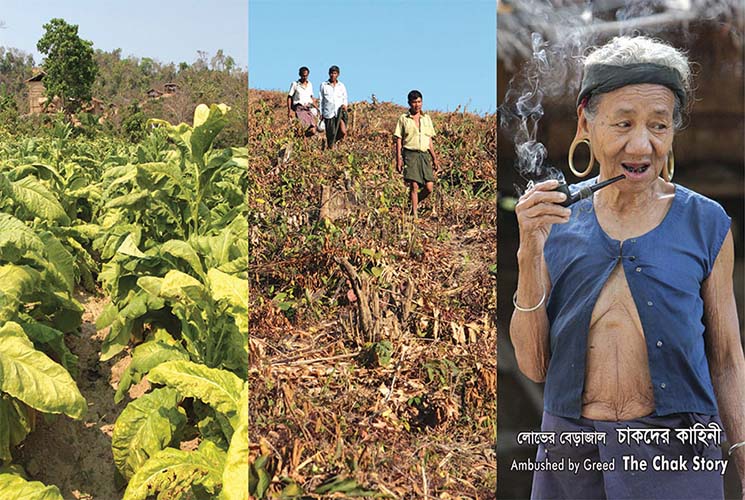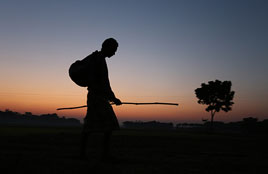 Photo: 3. Participants at a session. Photo.Philip Gain
Photo: 3. Participants at a session. Photo.Philip Gain
These marginal and excluded groups—ethnic communities, Harijans (sweepers),Bedes(gypsies), Jaladas (fishingcommunity in seashore), Kaiputra(pig rearing community), Rishi (cobblers), sex workers, Biharis and other smaller communities—face multi-dimensional exclusion and poverty challenges. While the majoritarian culture and religion have been trying to shape them according to their own image or likeness, these communities are struggling to establish their identities, languages, cultures and customary rights to land and forest. Social and political protection is also equally difficult for them to achieve.
 1. Dr. Photo: Harishankar Jaldas speaking at the convention.Photo.Prosad Sarker
1. Dr. Photo: Harishankar Jaldas speaking at the convention.Photo.Prosad Sarker
While some difficulties that these communities face are common, many are unique to each community. Many of the Adivasi communities such as Garos, Santals, and Oraons are deprived ofright to forest and land that used to be their commons. The forest-dwelling Adivasis do more have enough access to forest commons. But many still live in forest villages but withoutright to the veryland they live on. Many groups such as the tea communities, Harijans, Bedes, sex workersand Jaladas are completely landless or have little access tocrop land. Those who live among theirBenglai neighbors face land grabs and physical violence including killing and rape. All these anomalies lead to progressive denial of rights to land and forest commons and thus perpetuate continued impoverishment of the marginal and excluded communities that is generational.
It is in this context, four organizations—Society for Environment and Human Development (SEHD), Power and Participation Research Centre (PPRC), Christian Commission for Development in Bangladesh (CCDB) and Gram Bikash Kendra (GBK)—in their efforts to bring the challenge of exclusion and marginalization into focus organized a convention in Rangpur on 16 and 17 November. The event was part of a multi-year program supported by the European Union and ICCO Cooperation.
 Photo: Oraon cultural team performing at a cultural evening.Photo.Philip Gain
Photo: Oraon cultural team performing at a cultural evening.Photo.Philip Gain
The convention, first in the row of three, focused on the right to forest and land and social and political protection. While findings of research and investigations were shared from the organizers’ end, representatives of some 20 communities and groups and some 60 civil society, community based organizations and cultural groups assembled to share stories of deprivation and human rights abuses and importantly their cultural riches.
Multifaceted Deprivation
Research findings, reports and testimonies given by the victims clearly spelled out the multifaceted deprivation that the Adivasis and other excluded communities experience in their daily life. The director of SEHD, in his keynote presentation, reflected that communities that still live on the forest land have no right to land they live on. They are made to engage in conflict with the Forest Department that was created by the state. The Garos, Santals, Oraons and many other communities have been living in the forest since long time before the Forest Department was created. The British colonial rulers started taking control of the forest in the interest of the state. They started reservation of forest, an act considered ‘immoral’ by the forest dwelling communities. The subsequent states created many institutions that continued reservation and commercial exploitation of the forest resources.
 Colorful rally to kick off the convention. Photo: Prosad Sarker
Colorful rally to kick off the convention. Photo: Prosad Sarker
Eugine Nokrek, a Garo and the president of a premier local organization of the Garos and Koch in Modhupur sal forest area told the story of atrocities inflicted on them by the Forest Department. ‘To the Forest Department, we, the first people of the Modhupur sal forest, are illegal residents in the forest,’ said Nokerek who also informed that the most recent reservation of forest land with 14 villages within have made their life frightful on land they have been living on from time immemorial. “Seven thousand Adivasis are spending their days under eviction threat since the fresh reservation of 9145.07 acres of land in 2016.” Nokrek accuses that the process of reservation was completed without their knowledge, which is unlawful. Nokrek also narrated how plantation projects have caused massive destruction to natural forest.
Rabindranath Soren, president of North-Bengal based Jatiyo Adivasi Parishad (National Adivasi Council) concurred with Nokrek and gave a vivid description of how natural sal forest has been destroyed in Rangpur and Rajshahi divisions due to plantations. He also talked on immense sufferings that the Adivasis of the North Bengal go through due to progressive land grabbing and acquisition of land by the state. ‘Nawabganj Upazila in Dinajpur was once only a Santal-inhabited area. Broja Soren and Mongla Soren, two Santal brothers had 1800 bighas (594 acres) of land. Today their successors work as day laborers on other people’s land. This is how the Santals have seen their land grabbed,’ reported Soren who also accuses, ‘the land grabbers burn Adivasi houses, kill them and rape their women to grab land. The influentials, politicians and even the state agencies have rendered them landless. Insecure, many have left the country.’
Quite a few victims—men and women—from different districts came to the convention to testify the torment that the Adivasis, Harijans, sex workers, Bede and Biharis went through in the recent past.
One appalling case among them is the killing of two Santals at Bagda Farm in Gobindaganj in Gaibandha District. The Santals and others were demanding that the land of their forefathers that was acquired for Rangpur Sugar Mill be given back to them because the land was not being fully used for cultivation of sugarcane it as acquired for. On 6 November last year they were led into a fierce battle with state security agencies and two Santals were killed. Cases were filed but the victims report there is no progress in the cases.
Rafael Hasda, a Santal from Gaibandha reported on the Bagda Farm tragedy: “Our people have been killed. Nine false cases have been filed. The accused are hiding. We filed a complaint that remains confined to General Diary (GD).’
Men and women whose family members were killed, whose houses were demolished or burned, women who were raped gave testimonies at the convention.
Humiliation in social life is common for the Harijans. Kalu Bashphor, the general secretary of Bangladesh Harijan Yakkho Parishad, Rangpur shared his experience on deprivation and humiliation. “I work in a government office. Everybody in our office goes to the annual picnic, but I am left behind. My colleagues do not eat with a sweeper. I feel so humiliated,’ said Bashphor.
Language movement veteran and a well-respected octogenarian of Rangpur town Md. Afzal has deep understanding of the Adivasis and other marginal communities around. He is appalled at the sad stories that he hears. His observation: ‘We dreamed of equal rights for every citizen at the time of our independence. That dream has not come true. The Adivasis are deprived of their rights to education and employment. They routinely face repression and eviction from their houses and land. Even the government is taking away their land.’
Researcher and novelist Dr. Harishankar Jaladas travelled from Chittagong. He talked on their social and habitat condition and significance of their presence in the society. He believes the society cannot make real progress leaving them behind. ‘If Bengali society is considered a monument then it stands on marginal and deprived population. They make major contribution in building social structure, but they themselves remain deprived and neglected,’ said Harishankar Jaladas who himself suffered immensely because he is one of the Jaladas community. ‘Most important for their salvation is education. Educated, an Adivasi, a Harijan and a Bede will have a voice to claim rights.’
Marginality is a reality but it is an offence to take advantage of marginality to deprive a group of people, said Nurul Quader, representative of the delegation of European Union (EU) to Bangladesh. He informed that EU works towards achieving one of the key goals of SDGs, viz., no one should be left behind. He informed that the EU is working on a pilot project on land survey, which will facilitate formulation of a national land policy in Bangladesh. ‘In Bangladesh there are no separate policies on land use, forestry, fishery, etc. If there is a national land policy, its indiscriminate use can be halted. We have submitted a draft land policy to the government, which finalized, will yield benefit,’ reported Quader.
Dr. Hossain Zillur Rahman, a career researcher and chair of the inaugural session spoke on universal rights to education, housing, employment, land and social and political rights of the marginal and excluded groups. ‘It is not just poverty alleviation, Adivasis and marginal communities want their cultural diversity and self-identity nurtured,’ said Rahman. ‘Each has unique problems. But marginality is a common problem that keeps all marginal communities perplexed. Two major factors behind marginalization are lack of equal opportunities and attitude of society towards them. General poverty alleviation approach to address the issues of marginality will not be effective. Change in attitude of everyone is important here.’
‘Needless to say political protection of these communities depends much on the state and politicians who form governments. But social protection of the excluded people depends much on the people of the majority community. If the majority community plays an effective role in establishing equal dignity and social justice for all, political protection becomes easier,’ noted Gain, the keynote speaker.
Others who spoke at different sessions of the convention included Moazzem Hossain, Dr. Tanzimuddin Khan, Dr. Mohammad Abdul Wazed, Bhupesh Roy and Harun-ur-Rashid.
Celebration of Cultures
In a country of overwhelming Bangalee majority, there are as many as 115 communities among the Adivasis, tea workers and Harijans and there are at least 40 languages except for Bangla spoken by these communities. The diversity added by languages, education, indigenous technologies, cultural heritage, history and food habits of these communities is very important.
Nine cultural groups from among the Santals, Mushohors, Oraons, Garos, Mahles, Koras and Turis performed their unique traditional songs and dances in the evenings of both days. What was unique of the cultural groups and their performances was that most of the members were farmers, day laborers, housewives, coolies (Turi) and students. They carried with them their original drums, flutes, costumes and other cultural instruments that played and displayed filled the air of the convention venue with festivity. The participants sometimes sang and danced with them!
A group of 10 members from among the Kora, an ethnic community of merely 21 households in Birol Upazila in Dinajpur [there are 490 Koras in 26 tea gardens] came in their blue and green saris. Their group dance in loud chorus with drums impressed everyone.
Another remarkable team represented the Turi, a community of 2,341 households concentrated in the Northwest. The male drummers in the team are coolie (porters) and women are day laborers, However, their drums and dances made many of the audience dance with them.
The Garo team was somewhat different from other cultural teams. The team came from forest villages in the Modhupur sal forest in Tangail district. The team comprised of mainly aged women and young drummers and other instrument players danced and sang to showcase their forest culture that is ebbing. The Garos are almost 100% Christians, but their sun workshop, jum, dove, and monkey dances still show their affinity with the forest and traditional religion, Sangsarek.
An integral part of the cultural evenings on both days was lectures on cultural world of the Adivasis and other communities who are not Bengalis. On 16 November evening Dr. Masudul Hoque, a professor of Bangla of Dinajpur Government College marveled the audience when he spoke on the language and culture of the Adivasis and other marginal communities. In his discussion he emphasized on the relations between Bengali and indigenous cultures. ‘The Bengali language has hugely benefited from many languages spoken by different Adivasi communities. Bengali culture is also deeply indebted to other cultures,’ Said Hoque. ‘But the matter of great regret is the Adivasis and other marginal communities who are not Bengalis remain impoverished although they still hold their unique languages and cultural heritages.’
Dr. Shashwata Bhattacharjee, a professor of Kaunia College talked on the challenge to establish identities and cultures of the marginal and excluded communities on the second day of the conventions. He reflected on how culture is related with life, struggle and politics. ‘The greatest crisis of our indigenous people is their landlessness. Their culture and language are under threat due to progressive loss of their land,’ said Bhattacharjee. ‘Politics is also deeply connected with cultures and their protection. That our state religion is Islam and state language is Bangla is outcomes of politics that pose threats to other languages and cultures in Bangladesh.’
What needs to be done
Insecurity to life, language and culture considered, the speakers and participants shared their suggestions. For identities of different ethnic communities to be established defining all communities, making them visible and engaging communities in production of accurate statistics on each community was suggested. As the keynote speaker noted although according to the government source the number of the ethnic communities in Bangladesh is 27, we have mapped 110 communities [except those among the Harijans].
Each of these communities has an ethnic identity, belief, language and culture.’ In work on identity, it is important to examine what are defined in laws, its relevance and what more needs to be done. This will assist each community in their efforts for self-determination, which is very important. Care about languages and cultures is considered to be of great significance. Taking advantage of government, state and state processes (i.e. statistics, laws and safety net program) was suggested by many. Training of government officials was suggested to make them aware about the issues and difficulties of the communities. A national resource center is now under consideration to serve the communities and everyone else with information and guidance about the marginal and excluded communities.
——
Philip Gain, Syeda Amirun Nuzhat and Rownok Jahan
Thursday, November 30th, 2017
The writers are executive and research staff of Society for Environment and Human Development (SEHD)
Published in: http://www.dhakacourier.com.bd
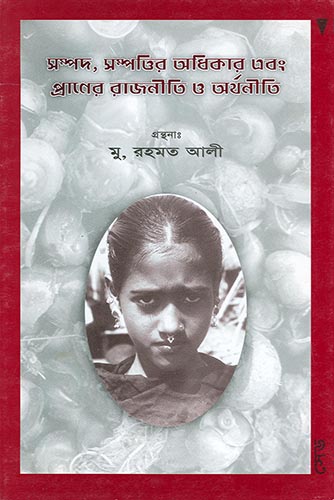

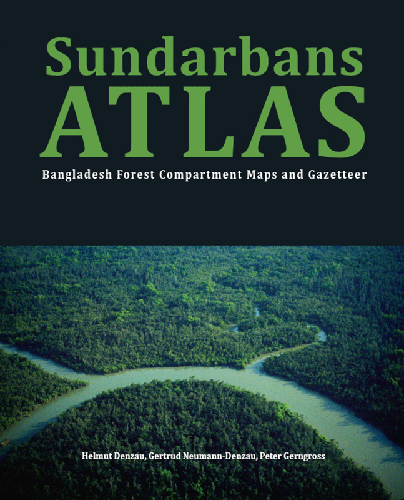
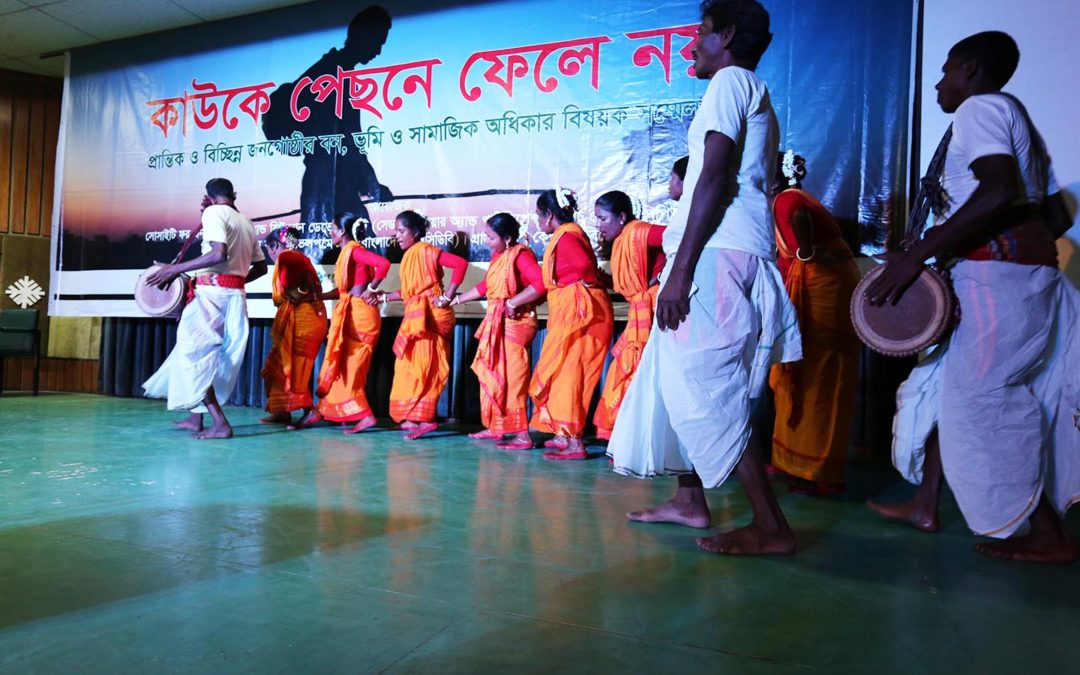
 Photo: 3. Participants at a session. Photo.Philip Gain
Photo: 3. Participants at a session. Photo.Philip Gain 1. Dr. Photo: Harishankar Jaldas speaking at the convention.Photo.Prosad Sarker
1. Dr. Photo: Harishankar Jaldas speaking at the convention.Photo.Prosad Sarker Photo: Oraon cultural team performing at a cultural evening.Photo.Philip Gain
Photo: Oraon cultural team performing at a cultural evening.Photo.Philip Gain Colorful rally to kick off the convention. Photo: Prosad Sarker
Colorful rally to kick off the convention. Photo: Prosad Sarker